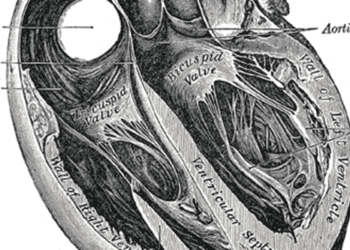Medicaid beneficiaries among most frequent visitors to the emergency department
Image: PD
1. Evidence shows that Medicaid beneficiaries visit the Emergency Department more than privately insured or uninsured patients.
2. Increased Medicaid beneficiary visits may be a result of decreased access to primary care.
Evidence Rating Level: 4 (Below Average)
Study Rundown: This study categorized and analyzed the different insurance statuses of patients who visited the Emergency Department (ED) in California between 2005 and 2010. It was found that while total visits to the ED increased by 13.2% in the study period increases in visit rates were not equal across all four categories of insurance status. Patients insured by Medicaid presented to the ED more often than both privately insured and uninsured patients. Medicaid beneficiaries also had the highest rate of increase visits during the period of study. It is likely that this disproportionate increase in Medicaid beneficiary ED visits is due to the reduced access to primary care. This is evidenced by the finding that the number of visits as well as increases in the rate of visits for ambulatory care service conditions (ACSCs), defined as conditions for which primary care intervention could have prevented hospital admission, was highest in Medicaid patients. The results of this study suggest the need for primary care is greatest amongst Medicaid patients and perhaps ensuring that this patient population has access to a general practitioner would reduce the number of ED visits as well as costs.
Click to read the study, published today in JAMA
Relevant Reading: Overuse of Emergency Departments Among Insured Californians
In-Depth [retrospective analysis]: This retrospective study reviews ED visit rates of patients with different insurance statuses in California from 2005 to 2010. Patient visits to the ED were categorized as insured privately, by Medicaid, uninsured, or “other”. Exclusion criteria were used, limiting the study population to patients under the age of 65 that were not Medicare beneficiaries. It was found that ED visits increased by 13.2% in the 5-year period with the greatest single-year increase of 6.7% occurring in 2009. Medicaid beneficiaries accounted for a greater number of visits (572 to 651 per 1000 population) than both privately insured (158 to 164 per 1000 population) and uninsured patients (242 to 259 per 1000 population). Patients presenting for ACSCs were predominantly Medicaid patients (54.76 per 1000 population) when compared to privately insured patients (10.93 per 1000 population) and uninsured patients (16.60 per 1000 population).
By Ravi Shah and Brittany Hasty
More from this author: Terminal cancer patients hold misconceptions of the role of chemotherapy, Home-based walking program an effective treatment for peripheral artery disease, Androgen deprivation therapy increases risk of acute kidney injury in patients with prostate cancer, Urine albumin excretion in black adults linked to higher risk of coronary heart disease, “Polypill” improves outcomes in cardiovascular disease
© 2013 2minutemedicine.com. All rights reserved. No works may be reproduced without written consent from 2minutemedicine.com. Disclaimer: We present factual information directly from peer reviewed medical journals. No post should be construed as medical advice and is not intended as such by the authors or by 2minutemedicine.com. PLEASE SEE A HEALTHCARE PROVIDER IN YOUR AREA IF YOU SEEK MEDICAL ADVICE OF ANY SORT. Content is produced in accordance with fair use copyrights solely and strictly for the purpose of teaching, news and criticism. No benefit, monetary or otherwise, is realized by any participants or the owner of this domain.







